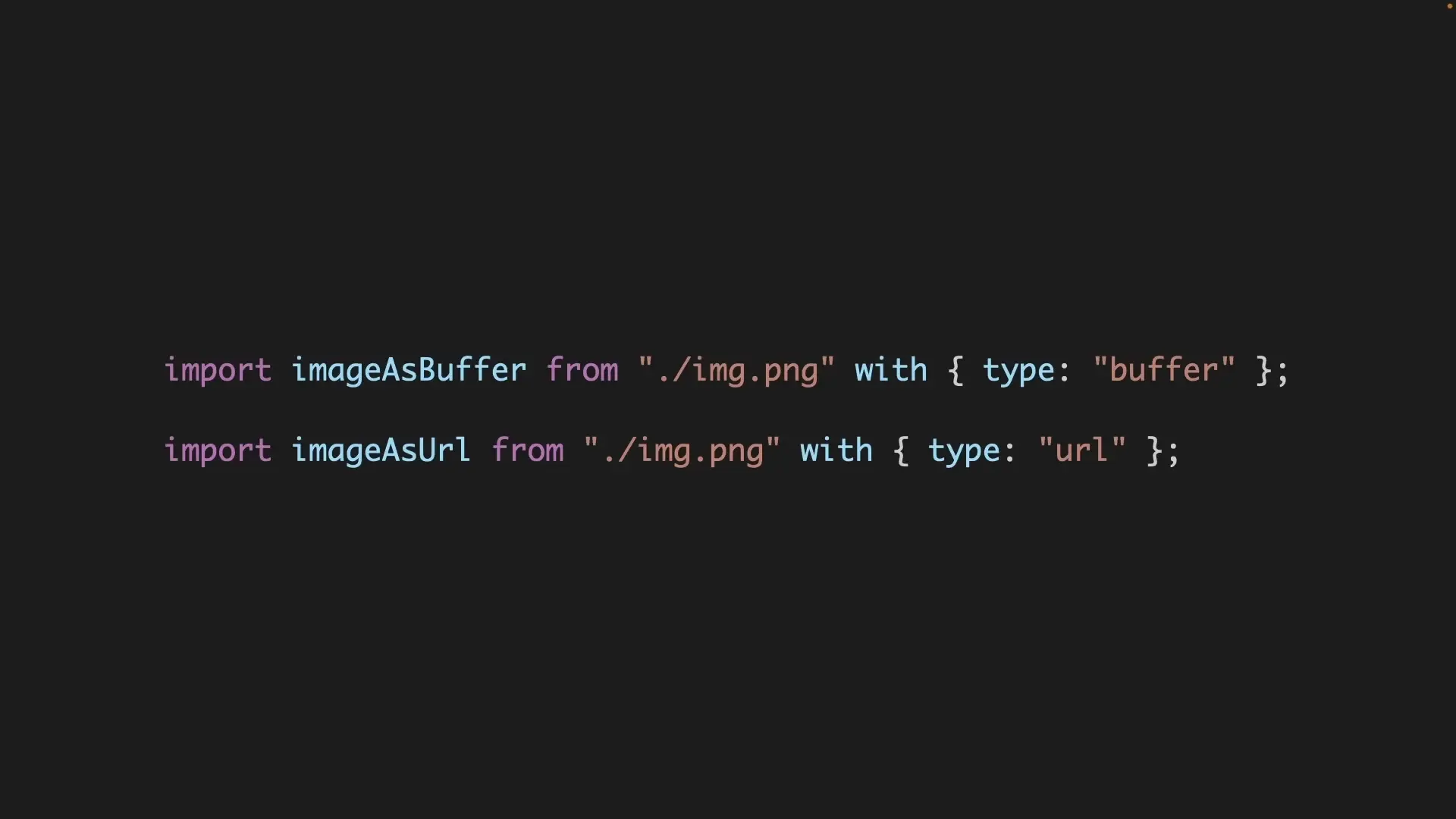
The release of TypeScript 5.3 marks another step forward in Microsoft's popular typed JavaScript superset. While this update doesn't introduce groundbreaking changes, it delivers several valuable incremental improvements that enhance developer experience and code quality. The good news is that upgrading to TypeScript 5.3 should be straightforward with minimal migration concerns.

Import Attributes: Better Resource Handling in TypeScript
One of the standout features in TypeScript 5.3 is support for import attributes, a JavaScript feature that TypeScript now fully embraces. This feature addresses a common challenge when importing non-JavaScript resources like images, where the expected return type can vary depending on your environment or bundler.
Consider a scenario where you need to import an image file. Depending on your setup, you might want this import to return a buffer in some cases or a URL to a static resource in others. Previously, developers often resorted to adding query parameters to imports as a workaround:
// Old approach with query parameters
import imageAsBuffer from './image.png?buffer';
import imageAsUrl from './image.png?url';Import attributes provide a more elegant, standardized solution using the `with` keyword:
// New approach with import attributes
import imageAsBuffer from './image.png' with { type: 'buffer' };
import imageAsUrl from './image.png' with { type: 'url' };This syntax not only offers better readability but also provides proper type checking and autocompletion for the attributes. Bundlers remain free to resolve these imports according to their implementation, while developers get the benefit of clearer code and better type safety.

Enhanced Switch True Narrowing: Better Type Inference
The second major improvement in TypeScript 5.3 is enhanced type narrowing when using the `switch(true)` pattern. This pattern has been popular among TypeScript developers for some time, but until now, TypeScript didn't properly narrow types within the case statements.
To understand the improvement, let's compare traditional if-else chains with the switch true pattern:
// Traditional if-else approach
function handleValue(input: unknown) {
if (typeof input === 'string' || typeof input === 'number') {
return input; // TypeScript knows this is string | number
} else if (typeof input === 'object' && input !== null) {
return input; // TypeScript knows this is object
}
return null;
}Now, here's the equivalent using switch(true):
// Switch true pattern
function handleValue(input: unknown) {
switch(true) {
case typeof input === 'string':
case typeof input === 'number':
return input; // Now properly narrowed to string | number in TS 5.3
case typeof input === 'object' && input !== null:
return input; // Now properly narrowed to object in TS 5.3
}
return null;
}
Prior to TypeScript 5.3, the compiler wouldn't properly narrow the types in the switch(true) pattern, resulting in both return statements being typed as `unknown`. With this update, TypeScript now correctly narrows the types within each case, making the switch(true) pattern a more attractive alternative to lengthy if-else chains.
Interactive Inlay Hints: Enhanced Developer Experience
The third notable feature in TypeScript 5.3 focuses on improving the developer experience through interactive inlay hints. Inlay hints are those helpful pieces of information that appear in your code editor, showing parameter names, variable types, and other contextual information.
In TypeScript 5.3, these hints become interactive in VS Code. You can now:
- Command-click on inlay hints to navigate to definitions
- Hover over hints to see more detailed information
- Interact with them similar to regular code elements
To enable inlay hints in VS Code, you can adjust your settings to show hints for parameter names, variable types, and other elements:
// VS Code settings.json
{
"editor.inlayHints.enabled": "on",
"typescript.inlayHints.parameterNames.enabled": "all",
"typescript.inlayHints.variableTypes.enabled": true
}This enhancement makes the TypeScript development experience in VS Code even richer, allowing for faster navigation and better understanding of your codebase.
Additional Improvements in TypeScript 5.3
Beyond the three main features, TypeScript 5.3 includes several other enhancements:
- Performance optimizations for faster compilation
- Reduced size of node_modules installations
- Various bug fixes and minor improvements
Should You Upgrade to TypeScript 5.3?
TypeScript 5.3 represents a low-risk, high-reward upgrade for most projects. The new features enhance developer productivity without introducing breaking changes, making it what could be described as a "no-brainer upgrade" for teams already using TypeScript 5.x.
The combination of import attributes, improved switch true narrowing, and interactive inlay hints delivers tangible benefits for everyday TypeScript development. Whether you're building frontend applications, backend services, or full-stack solutions, these features contribute to more maintainable and type-safe code.
Conclusion: Steady Progress in the TypeScript Ecosystem
TypeScript 5.3 continues the language's tradition of steady, incremental improvements that collectively enhance the developer experience. While none of the features in this release are revolutionary on their own, they address common pain points and streamline development workflows.
As TypeScript continues to evolve, these thoughtful improvements demonstrate Microsoft's commitment to making TypeScript development more productive, intuitive, and enjoyable. With TypeScript 5.4 on the horizon, we can look forward to seeing what new features and enhancements will be coming next to this increasingly essential tool in the modern web development ecosystem.
Let's Watch!
TypeScript 5.3 Unveiled: 3 Must-Know Features for Modern Developers
Ready to enhance your neural network?
Access our quantum knowledge cores and upgrade your programming abilities.
Initialize Training Sequence